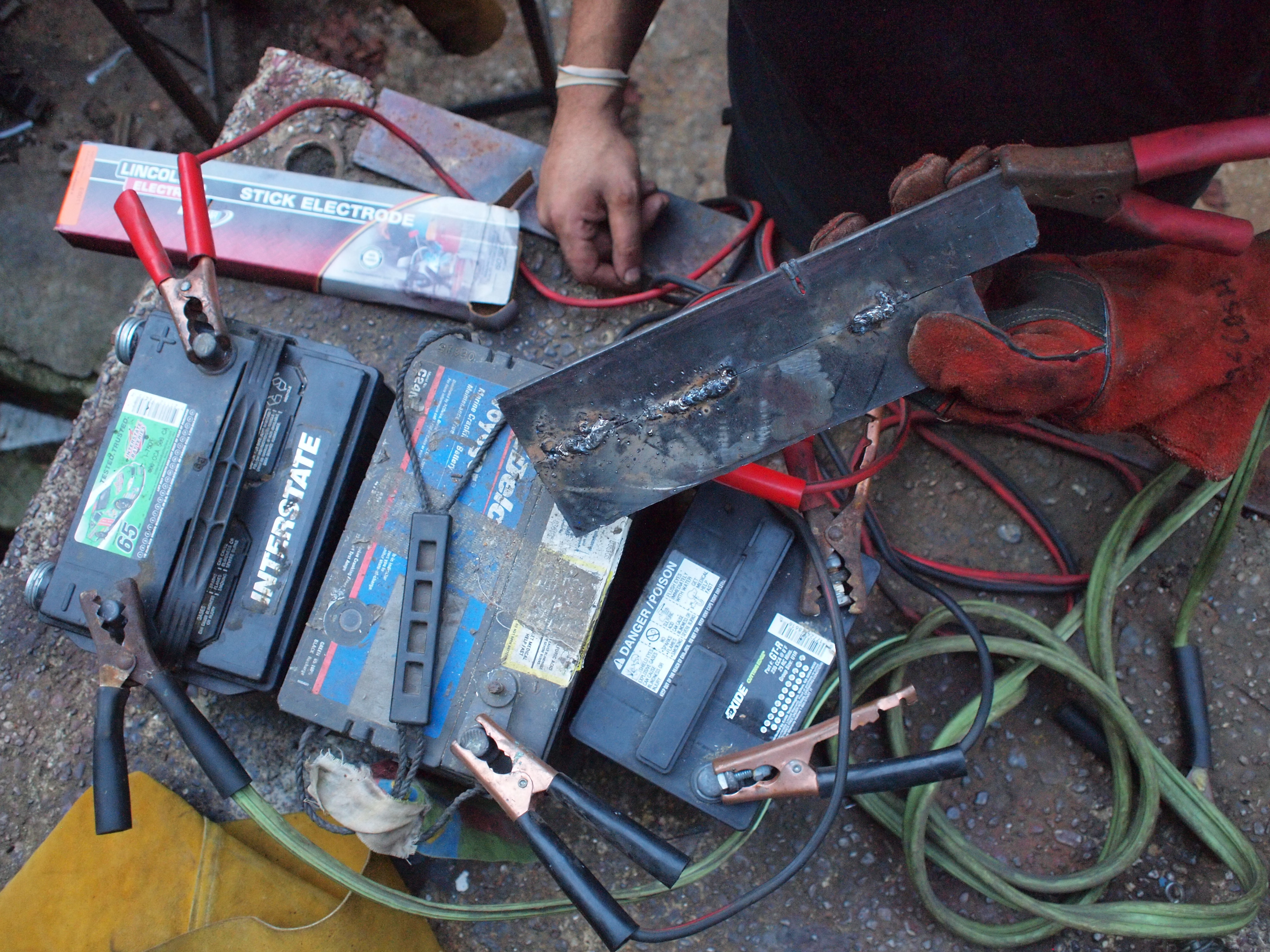Gather materials. Some of the things you need to buy, most of them you prob either have lying around or can borrow.
Gloves. Welding gloves would be nice, but any heavy, non-flammable gloves will do.
Jumper cables. You will need at least a couple of sets, or one set and some heavy-gauge wire to wire the batteries together. How heavy? Like, as thick as a jumper cable.
Welding helmet. Cute little steampunk-y goggles will not cut it. Arc welding dumps out a ton of UV. All exposed skin will get a deep, horrific sunburn. A cheap welding helmet will work almost as well as a fancy one.
Three car batteries. Smaller batteries (like ATV, golf cart, motorcycle) will work as well. What you need is a total of 30-36 volts. The more amp hours (usually, the larger the battery, the higher the hours), the longer you will be able to weld.
Hammer. For chipping slag- a welding chip hammer is best, but a normal claw hammer will work. A rock works, too.
Steel to weld. If it rusts, it’s steel.
Welding electrodes, or rods. Steel rods, covered in flux. To make your own would be hardcore DIY and a waste of time. You can buy welding rods anywhere in the world. Get a box of 6010 or 6011 1/8 inch electrodes. 5 pounds will set you back $20, max. You can also beg a handful off of any welding shop. The number code refers to the strength of the electrode, the chemical composition of the flux, and the positions you can weld in. Interesting stuff, but kind of beyond the purview of this. For more info go here.


